Corpus Cristi 2022 - This you must see!
Thursday, June 23, 2022
Corpus Christi is the Catholic holiday in honour of the body of Christ - the Eucharist. It is celebrated throughout Spain and is held in either May or June depending on when Easter occurs. To calculate the next Corpus Christi date, look for the first Thursday after Trinity Sunday (the eighth Sunday after Easter) and you’ll know when the fiesta is set to begin in towns and villages throughout Andalucia. This year it fell on June 20th and in Torrenueva, they really celebrate it.
It is a solemn and magnificent procession which bears the consecrated host through the streets. Although Corpus Christi is celebrated all over Spain, I wanted to bring to your attention the wonderful efforts that are made in a small village hidden away in Don Quijote's countryside: Torrenueva.
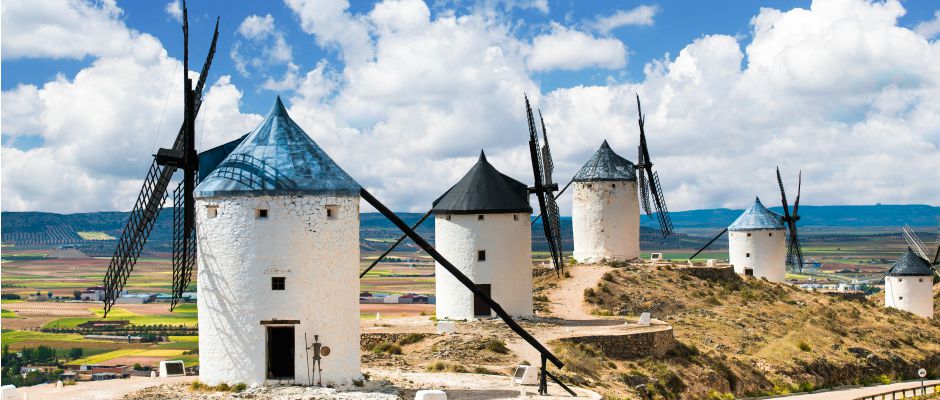
I have written about Torrenueva on a few occasions but I really felt the need to share this with all of you as it is a truly breathtaking occasion.
The history of Corpus Christi is particularly interesting as the Catholic kings used it as a tool to Christianise a population that had been under Muslim rule for some eight centuries. According to historical accounts, they even instructed the town halls to invest large sums of money into the fiesta and urged the town to celebrate until they “appeared crazy”.
In the past, all the towns and villages were forced to each supply a specific amount of greenery to carpet the streets. And historically, theatre carts travelled around the towns, following the Corpus Cristi processions and putting on plays, especially in Granada. It seems that it got out of hand at one point and in 1765 King Carlos III officially put a stop to the custom.
Today it is still typical to carpet the streets of towns and villages with greenery for the solemn Corpus Christi processions. This adds a special ambience to the processions. The Corpus Christi parades also tend to attract all the local authorities, and in some cases, military personnel as well.
The neighbours of Torrenueva have always adorned the streets where the procession of the Corpus was passing with flowers, pots, and decorations... but it has been in the last two decades when these streets started to be decorated with carpets of wonderfully colourful sawdust, which are culminated after a long and laborious work by the locals, forming a unique spectacle which attracts visitors from the whole province.
The neighbours with the help of the City Council, get to work by tinting sawdust, preparing fabrics and organising the ornaments they have been preparing for weeks, until the Saturday night before, when they leave everything ready. All the inhabitants donate 2 euros for the sawdust and normally the women get to work tinting it. Not sure what the men do, probably watch from the local bar!
In Torrenueva the neighbours decorate balconies with fabrics, they place altars with religious and biblical motifs, in addition to tinted sawdust, and tinted rock salt and with the help of moulds, they adorn the streets with spectacular carpets of vibrant colours.
The streets remain intact until the procession formed by: altar boys, communion children, priests and their entourage walk over them on what is considered the grand day of Corpus Cristi. Truly a spectacle worth watching if you happen to be in the area. I hope you enjoy the photos from this year's Corpus Cristi 2022.
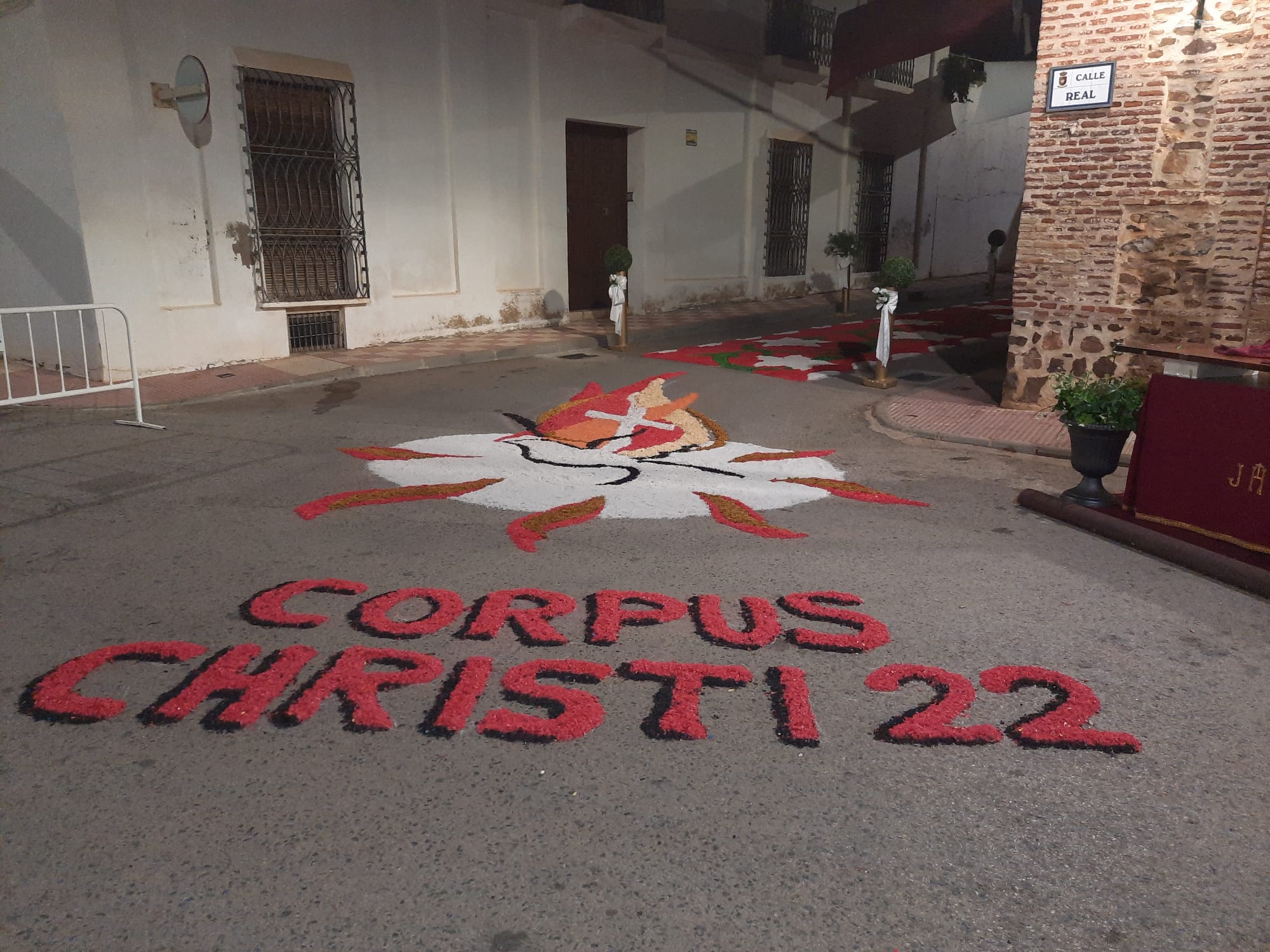
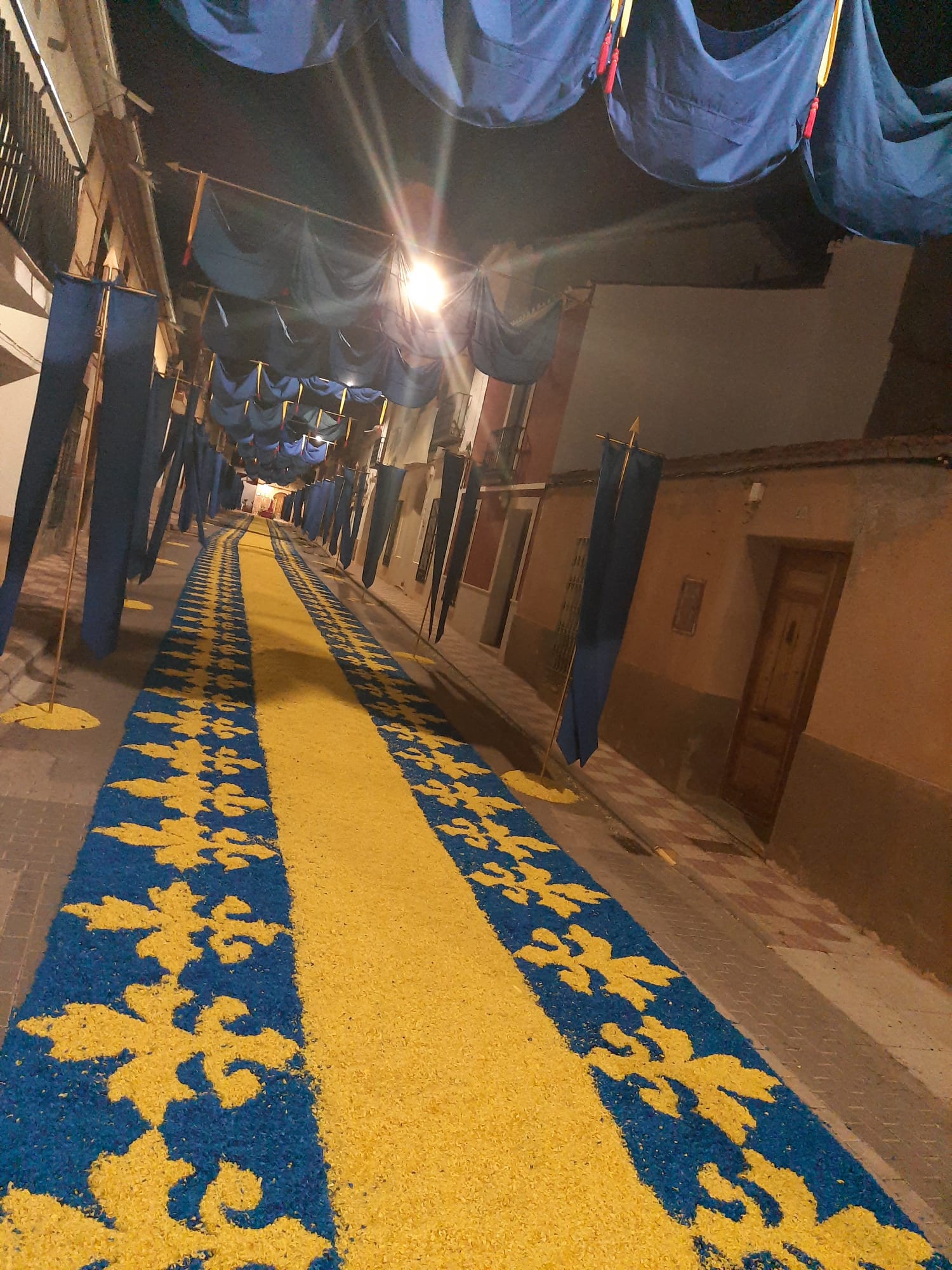
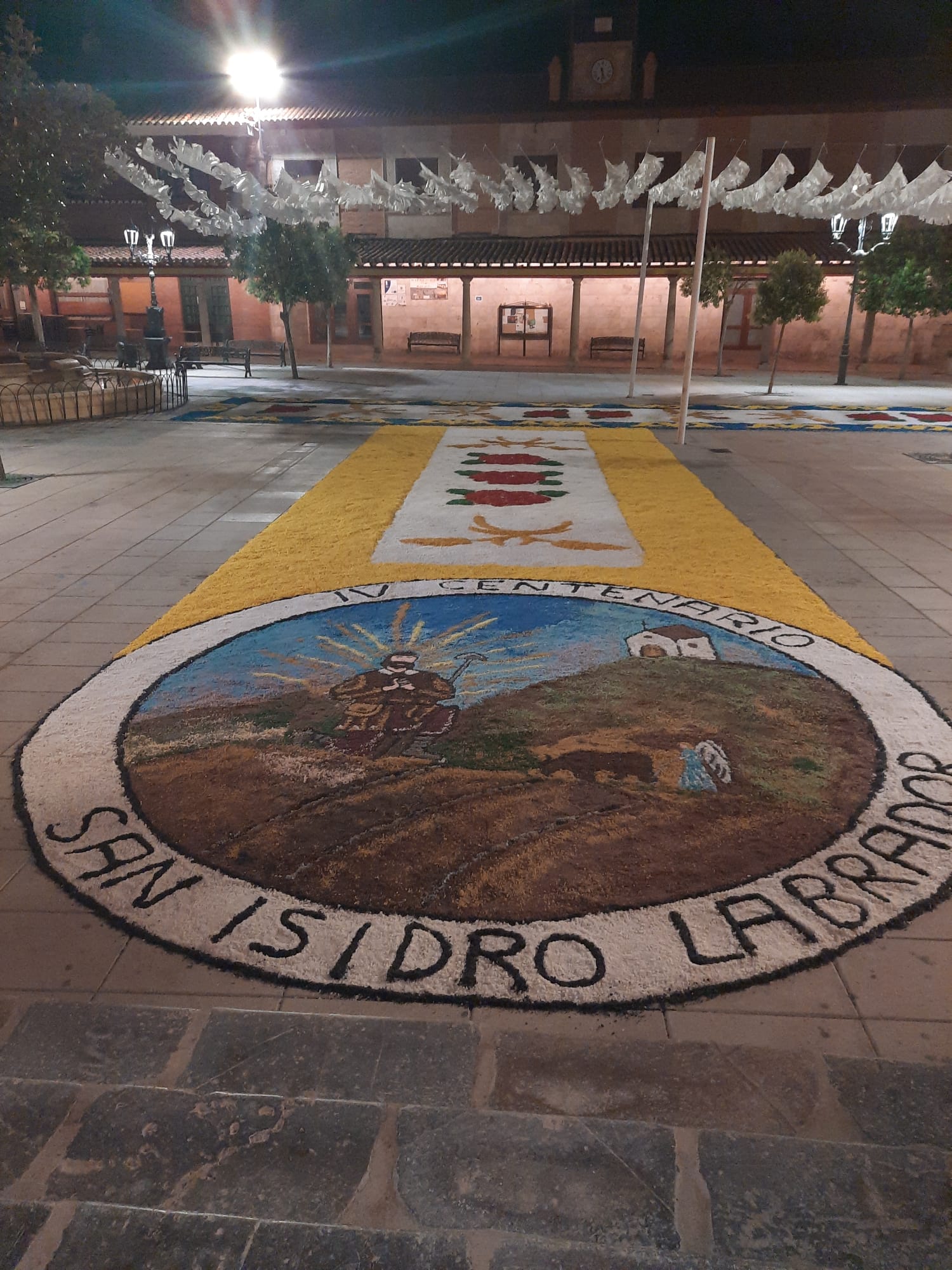
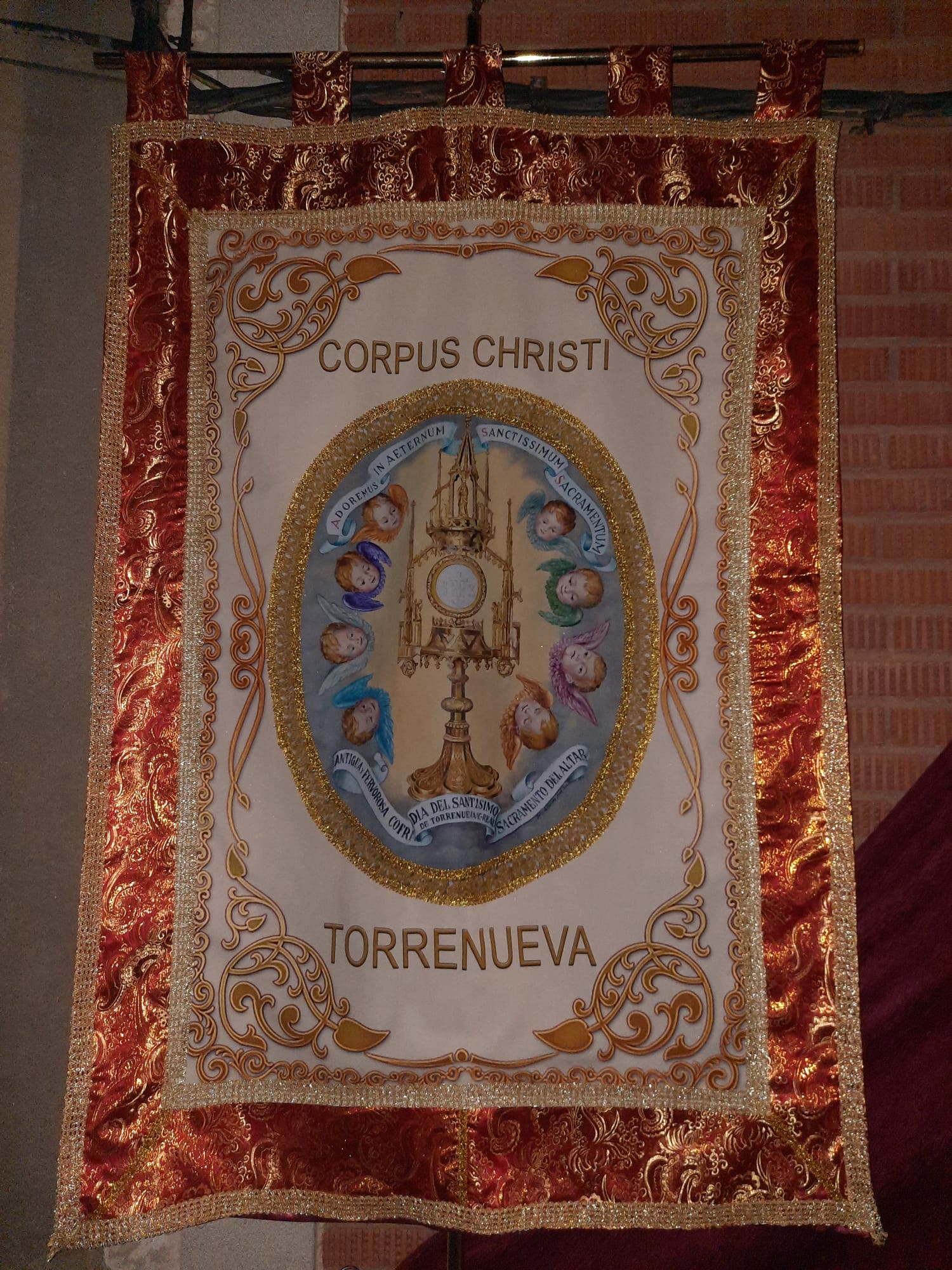


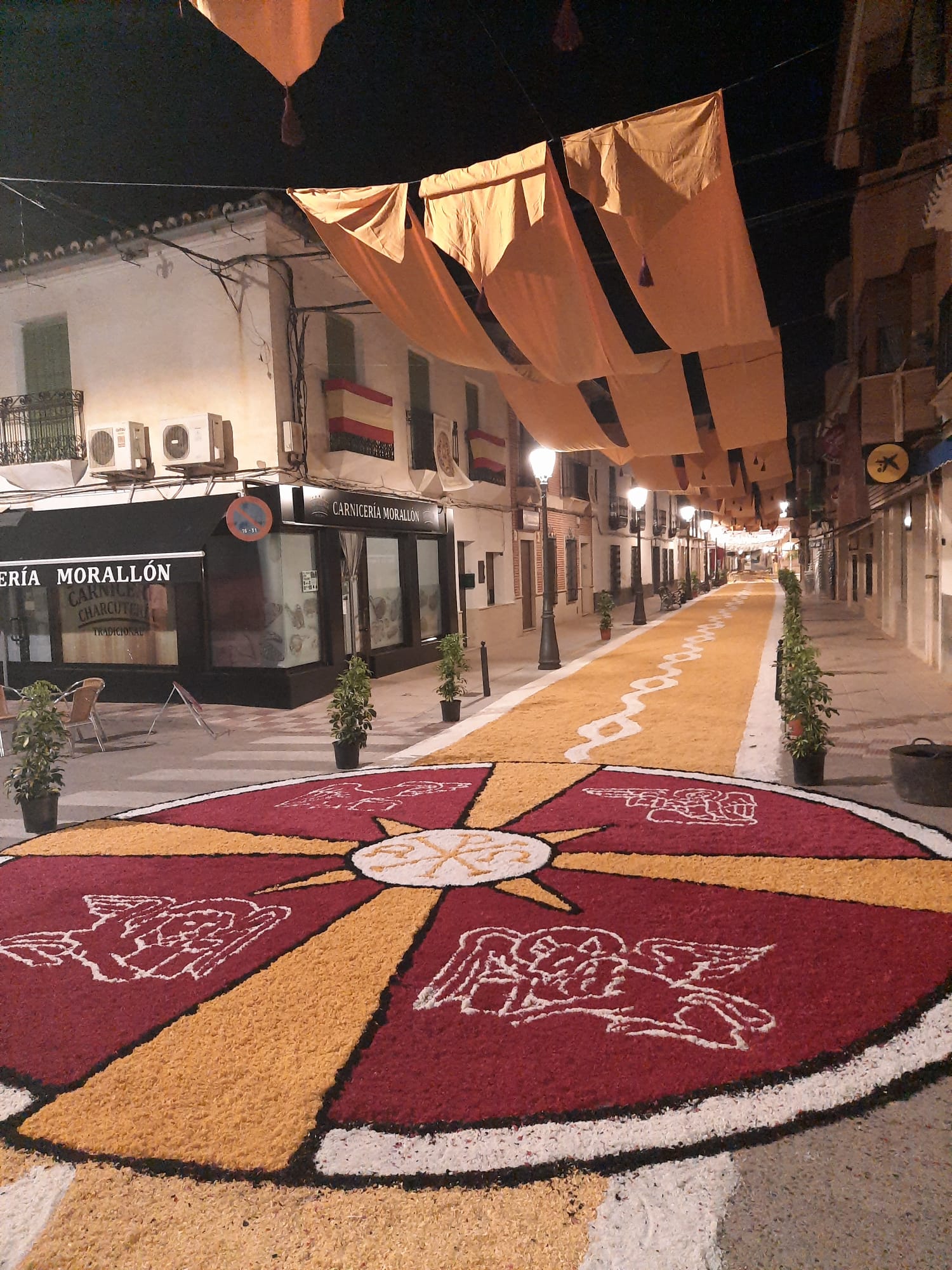

WOW!
 1
Like
Published at 8:10 PM Comments (0)
1
Like
Published at 8:10 PM Comments (0)
Four of the most beautiful medieval towns in Spain are in Aragon
Thursday, June 16, 2022
Aragón does not stop receiving praise from renowned publications, thanks to its rich and varied heritage, spectacular natural landscapes and charming towns.
Last March, the French newspaper 'Le Monde' placed Riglos among the favourite destinations to visit in 2022, last year, Loarre Castle was chosen as the most beautiful in Spain by the followers of the Lonely Planet Instagram account, and was among the 15 most beautiful in the world, according to 'National Geographic'. In addition, the British site Uswitch placed Albarracín as one of the most beautiful towns in Europe. Also worth mentioning that the Ordesa National Park has recently been chosen as the best in Aragon by the followers of Lonely Planet Spain on Instagram.
On this occasion, the aforementioned publication 'National Geographic' has selected four medieval Aragonese villages among the 30 most beautiful in Spain. Beautiful towns with cobbled streets and, often, prominent slopes, where it seems that time has stopped. These are the towns of Daroca, in the province of Zaragoza, Albarracín, in Teruel, and the Huesca Alquézar and Aínsa. Of these, three (Albarracín, Alquézar and Aínsa) are part of the selection of 'The most beautiful villages in Spain', in which Aragón has a total of 13 towns.
Daroca
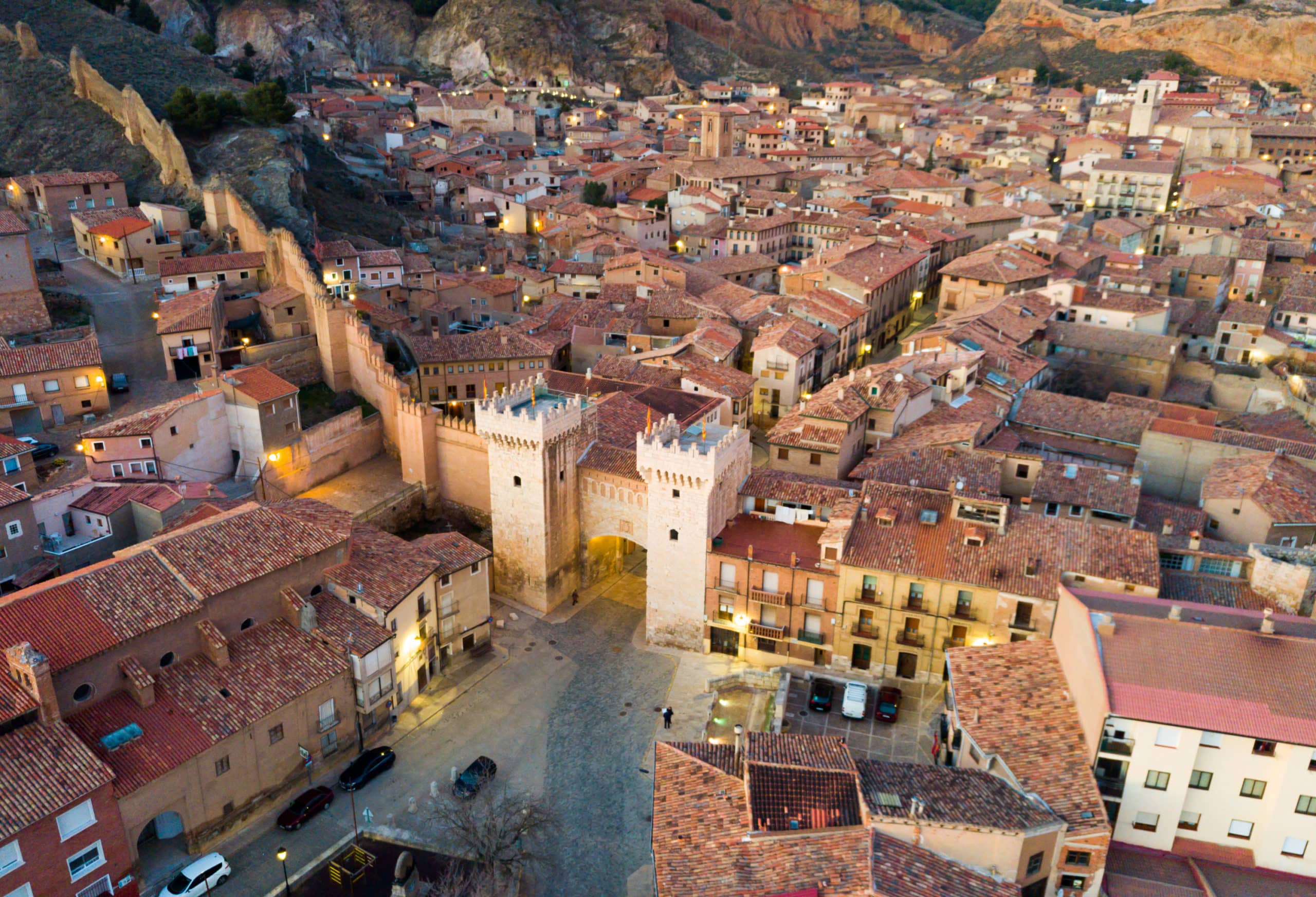
This Zaragoza town, which is most famous for its wall, has managed to maintain its marked medieval flavour over time, which is why it is well worth a visit. This can be done as a day visit from the Aragonese capital, as it is only 83 kilometres away. In addition to walking along the wall, which is four kilometres long, it is essential to visit the Collegiate Church of Santa María, which guards the famous Corporales and also houses the Diocesan Museum. The publication highlights that its towers, which welcome the traveller, can boast about being one of the most beautiful on the peninsula.
Another thing that everybody must see when visiting the town is the visit to the Manuel Segura pastry shop. And if you have time, drop by Anento, a small town that appears on the list of the most beautiful in Spain.
Albarracin
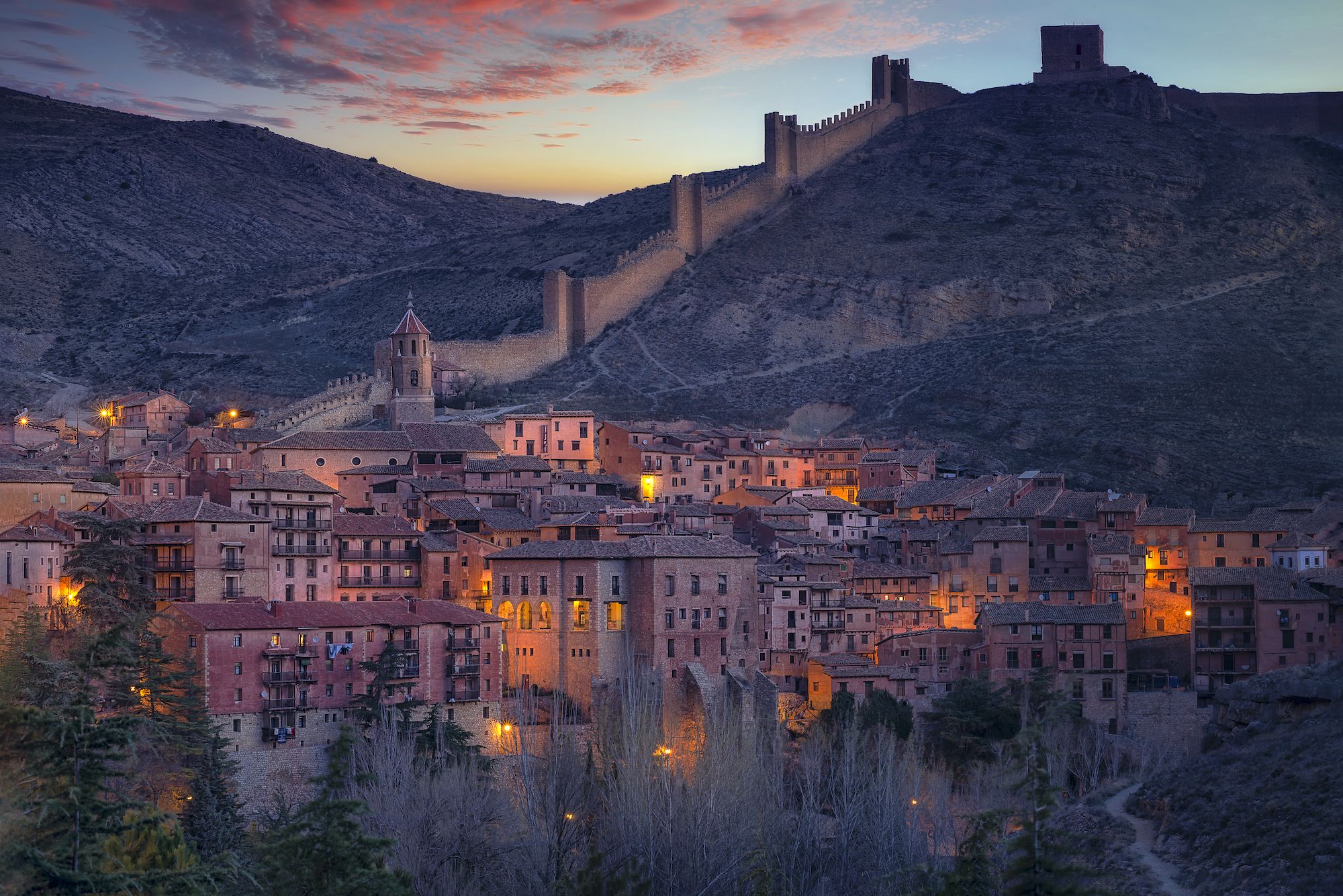
The town of Teruel is one of the main tourist attractions in Aragon. National and international visitors pass through its streets at any time of the year, attracted by the alleys of its historic centre, historic buildings, museums and a natural environment of great beauty with the Albarracín Cultural Park and the Rodeno Pinares Protected Area. 'National Geographic' recommends walking the wall that surrounds the municipality and stopping at the Plaza Mayor and Calle de la Catedral.
Alquezar
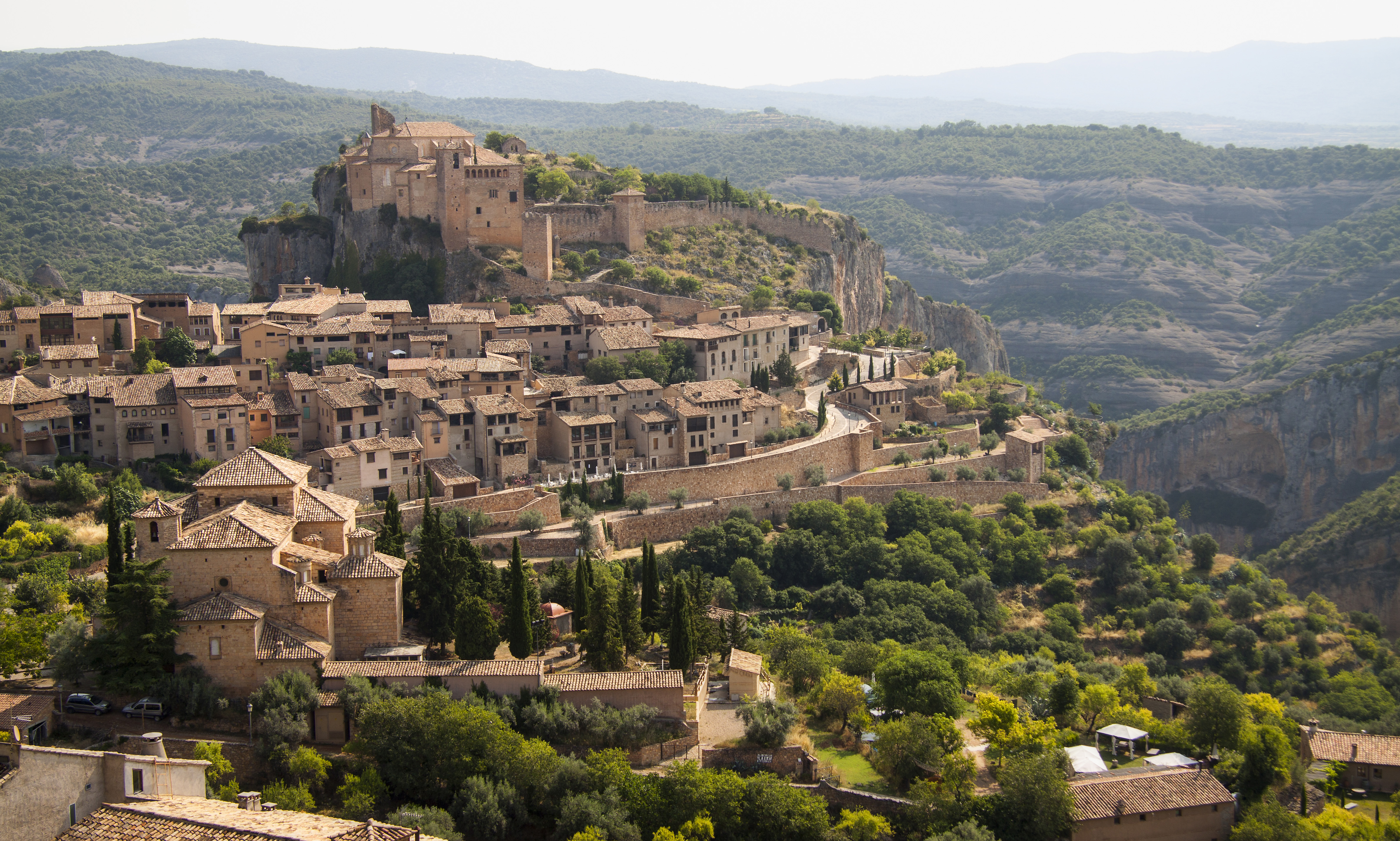
This town in Somontano, located in the heart of the Sierra y Cañones de Guara Natural Park, also knows a lot about beauty, whose medieval past is clearly reflected in its irregular layout and narrow streets. Declared a historic-artistic complex, it combines a fairytale image with adventure tourism, chic hotels and a high-end gastronomic variety. The publication highlights its castle-collegiate church of Santa María, one of its main treasures, and the impressive views that the town's viewpoint offers of the town and its surroundings. The main square (or that of Rafael Ayerbe) or the church of San Miguel are also worth visiting.
Along with the essential walk through its streets, whoever arrives in Alquézar cannot leave without going through the footbridges over the Vero, which surrounds the town. A route through nature suitable for family enjoyment through the interior of the river canyon.
Ainsa
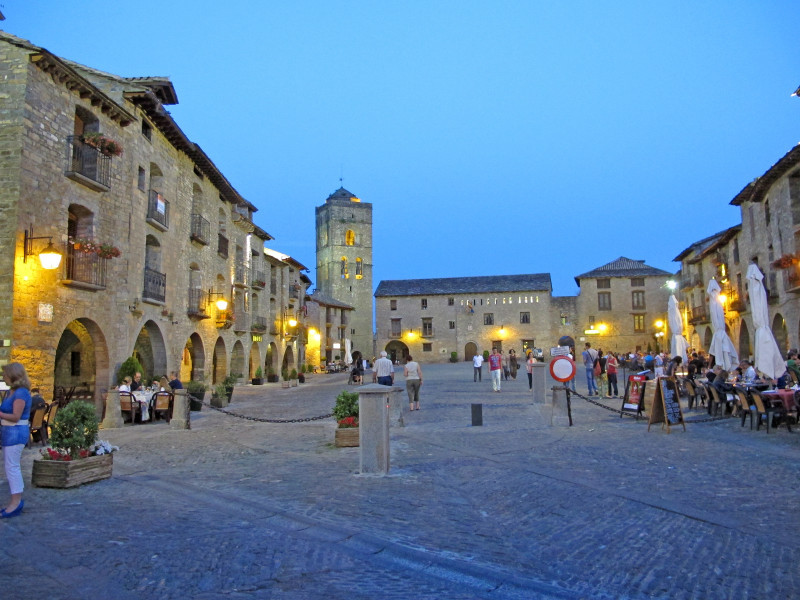
Around the 12th and 13th centuries, this square was built, which today preserves all its essence, becoming one of the most beautiful in Spain. It still preserves the remains of the first wall, although the characteristic element of the porticoed square is the semicircular arches.
'National Geographic' also highlights this beautiful corner of the Pyrenees that serves as the gateway to the Ordesa National Park. Its old town is one of the best preserved, declared a historic-artistic complex in 1931. The Plaza Mayor, the epicentre of the town's cultural activity, is the maximum expression of the medieval past of this town, one of the most visited in the province from Huesca. Other important tourist spots in the city are the Romanesque Church of Santa María and the castle walls. Among its rich gastronomic offer, Aínsa can boast of having a Michelin star restaurant: Callizo.
Its surroundings also offer different possibilities to practice adventure sports, such as rafting or canyoning in the Añisclo Canyon area or rock climbing.
 2
Like
Published at 10:52 AM Comments (0)
2
Like
Published at 10:52 AM Comments (0)
Ibonet de Batisielles, a magical spot...
Tuesday, June 7, 2022
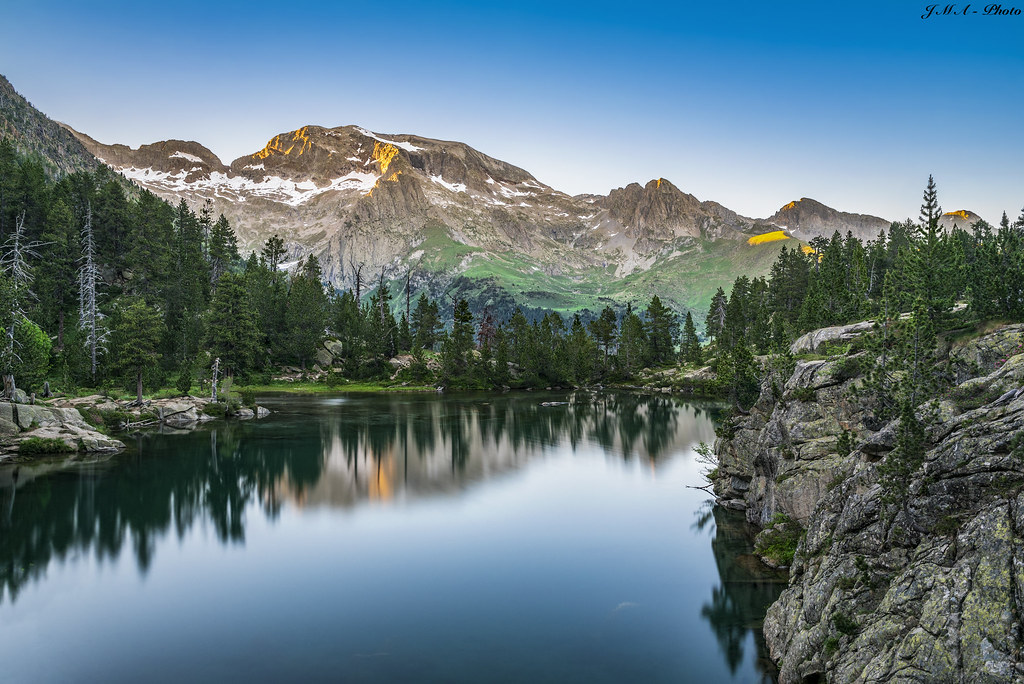
<Foto Josep Maria Aragonés>
Batisielles, with its crystalline lake set in a green meadow and its creek winding through rhododendrons, black pines and tall and jagged mountains such as the Tucas de Lxeia and the Agujas de Perramó, is not just the definitive postcard of the Huesca Pyrenees: it is the photo that could be shown to an extraterrestrial to show them how beautiful our world is and make them envious. Logically, it is also one of the most popular and frequented mountain routes on which you cannot get lost, because it starts in the Estós Valley car park, three kilometres above Benasque, and at all times follows the red and white painted marks of the GR-11.2 trail.
After two hours of walking, first, on a forest track and then on a steep, stony trail, the lake is reached. There there is a high mountain ambience and breathtaking views that will take up all the memory in your camera, because for photographers, Batisielles is addictive.
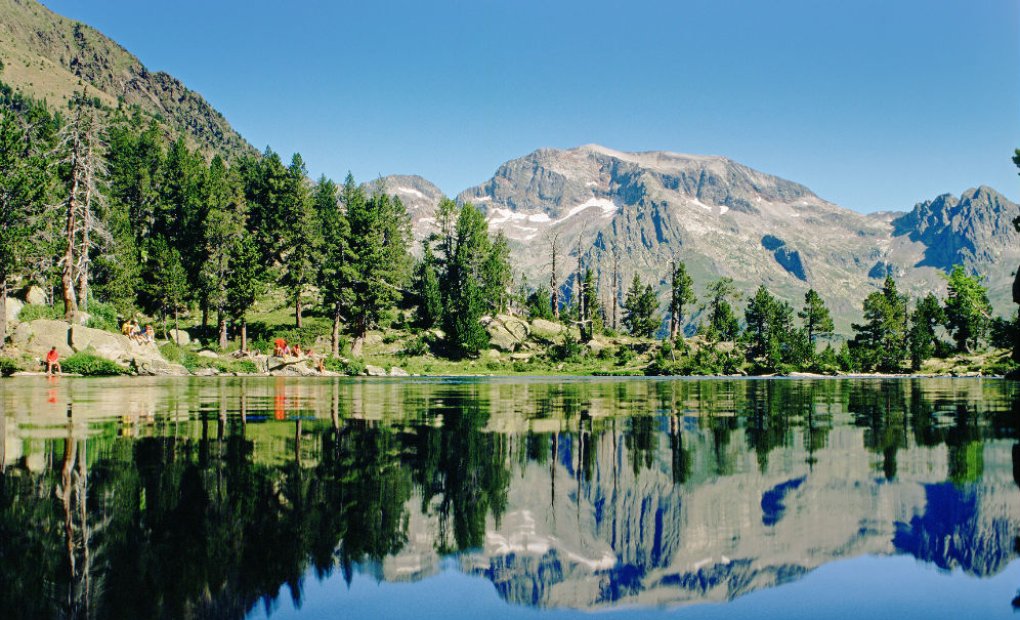
From the small lake, the route can be taken further to the larger lake of Batisielles (one hour) or to those of Escarpinosa (45 minutes). Both options are signposted. The words of the French count Henry Russell, who toured this area of solitary stone, water and sky in the second half of the 19th century, still express what the mountaineer feels today: What earthly paradises! The lakes of Escarpinosa, the immense forests that surround them and the irresistible enchantment of these lost lakes in the faraway deserts of the Pyrenees, hidden among the firs, unknown to the masses, in which wild pyramids 3,000 metres high, immense fields of snow and the mysterious world of the stars can be seen! I hope that nature preserves here for a long time, even forever, its blanket of flowers, its grace and virginity.
Before or after climbing to Batisielles, visit the village of Benasque. It has a quaint old town of narrow streets, grey stone houses and thick slate roofs with Roman-style paving. Here you will see the Renaissance church of Santa María la Mayor, the palace of the counts of Ribagorza (16th century), the house of Marcial Río (17th century), the ancestral Pyrenean home of Fauye and the Infanzona of Juste (15th century), the latter with a large crenellated turret. The restaurants in Benasque serve a variety of game, trout and mushrooms, which are abundant in the mountains.
 1
Like
Published at 10:42 PM Comments (0)
1
Like
Published at 10:42 PM Comments (0)
The Great Wall of Spain?
Thursday, June 2, 2022
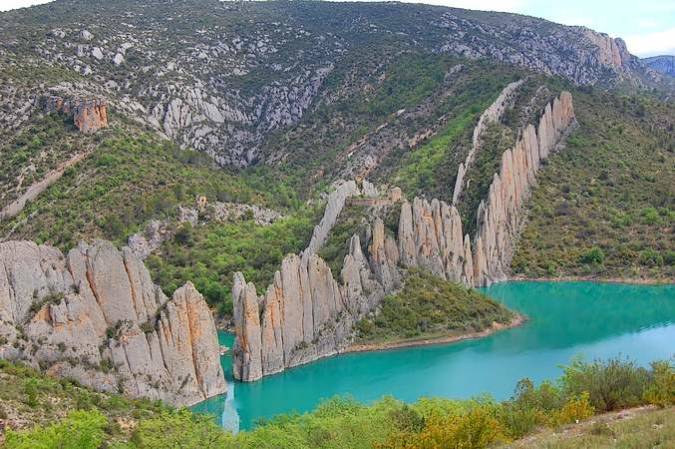
When I thought I had seen it all, I came across nothing more and nothing less than a Chinese Wall in Aragon. It is a rock formation made up of two rows of high limestone walls placed parallel to each other by nature itself. All this gives the illusion that a high wall runs along the side of the mountain in the same style as the Chinese monument.
This curious arrangement, known as the walls of Finestres, is located in Huesca and is part of the Sierra del Montsec. They originated as a result of the erosion of wind and water in this area of the Pre-Pyrenees, which was modelled until it became the beautiful formation that it is today.
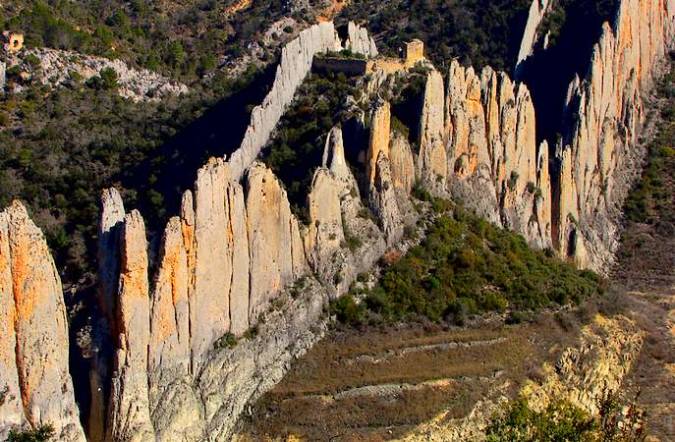
In addition, right between the two rocky walls we can find works made by man: the ruins of a medieval castle and the hermitage of San Vicente. The uninhabited town of Finestres is also located in the area, from where you can find wonderful views of the wall. Some of its stone walls and mansions are still standing here, forming a small square.
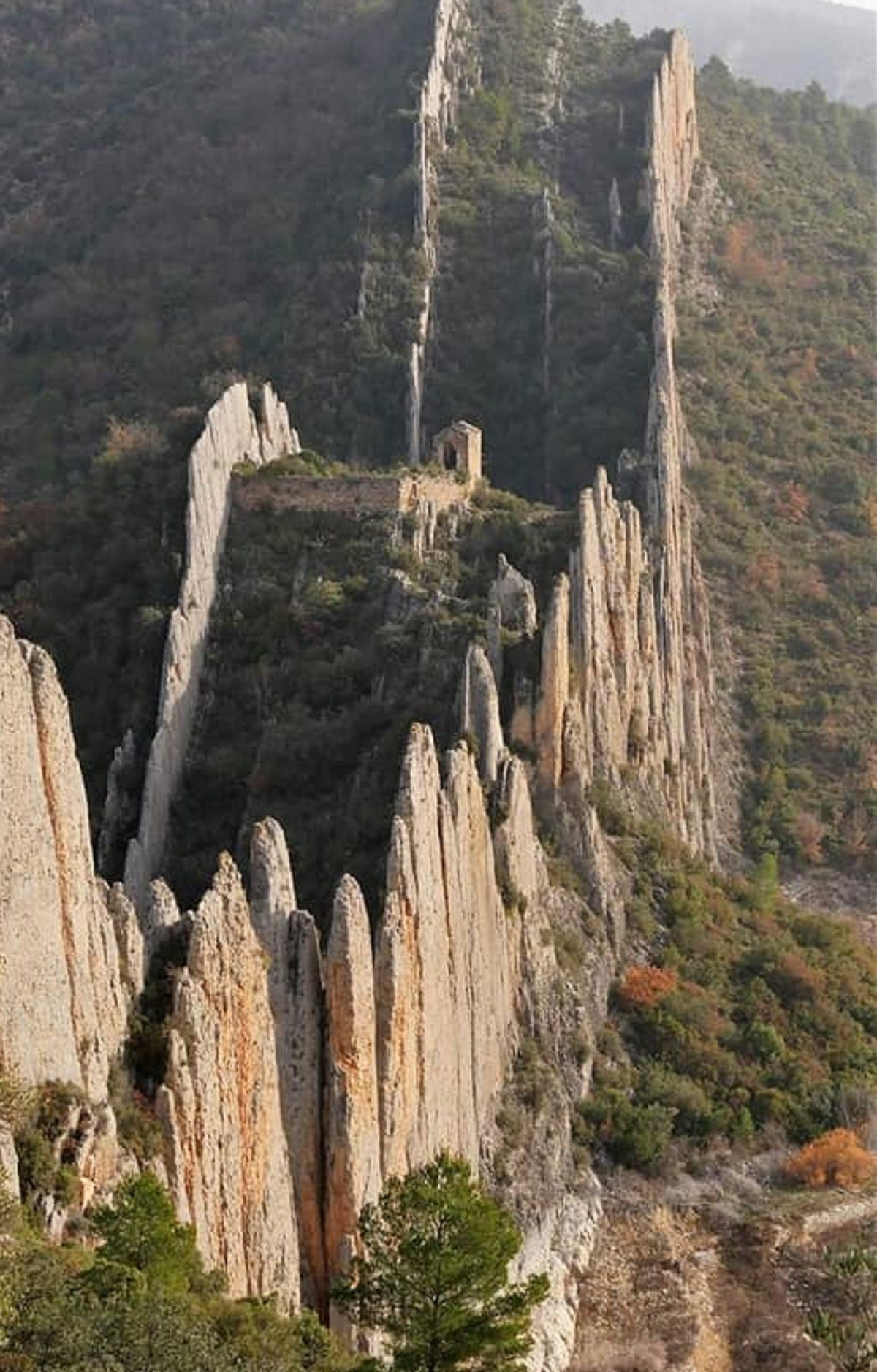
Another place from which to contemplate this beautiful landscape is the viewpoint of the hermitage of San Marcos. In this church, we can also see the Canelles reservoir, another of the natural elements that stand out in this territory.
You can reach this magnificent formation from the towns of Estopiñán del Castillo or Estaña. From there you will have to go to the Penavera bridge, pass through the town of Finestres on foot, by mountain bike or in a 4x4 and continue along a marked path to the wall.
 4
Like
Published at 4:43 PM Comments (2)
4
Like
Published at 4:43 PM Comments (2)
Spam post or Abuse? Please let us know
|
|